Planting Time, Corn Products, and Cover Crops: Unraveling Their Impact on Preceon™ Smart Corn System Yield and Crown Rot Incidence
March 31, 2025
TRIAL OBJECTIVE
- Cover crops are widely adopted for the benefits they provide to support soil health, reduce erosion, and encourage nutrient cycling. However, their impact on Preceon™ Smart Corn System products require further study to help optimize management.
- Crown rot, often caused by Fusarium spp., is a significant concern in Midwest corn production that impacts plant health, standability, and yield.
- The objective of this trial was to understand how Preceon™ Smart Corn System products, planting date, and cover crop species influenced corn yield, ear height, and Crow Rot disease, providing insights for growers to help optimize productivity with cover crops.
RESEARCH SITE DETAILS

- The trial design was a split-plot randomized complete block. The three treatment factors were cover crop, corn products, and corn planting date. Cover crop and corn planting date were the whole-plot factors and corn products the split-plot factor (Table 1).

- Field operations, cover crop seeding rate and planting time, fertilizer, herbicide, irrigation, and precipitation information are listed in Table 2.
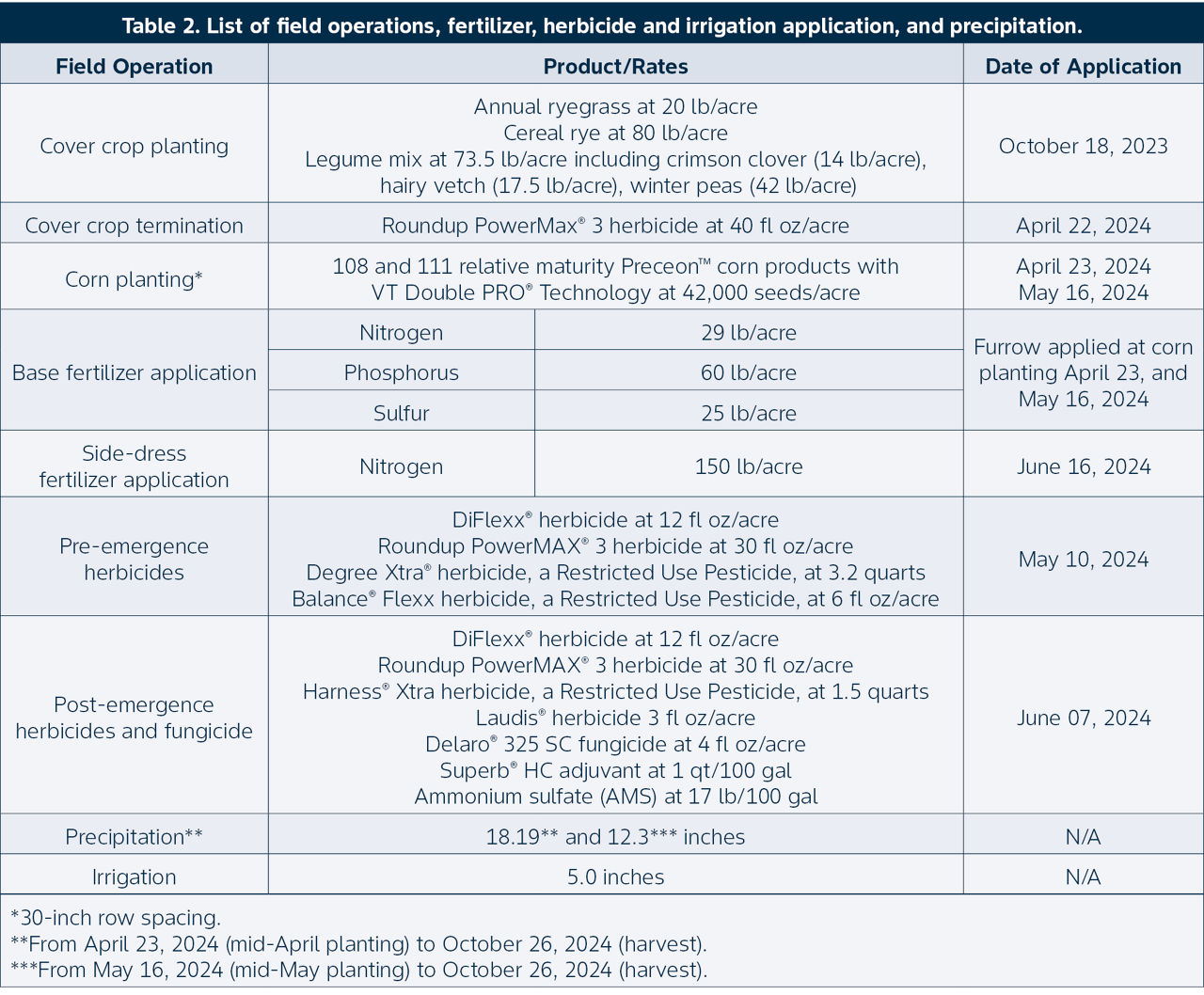
- Grain weight, test weight, and percent grain moisture content for each plot were collected with a small plot combine and used to calculate yield per acre (bu/acre).
- Statistical analysis was performed using Fisher’s least significant difference (LSD) test or a least-squares means test.
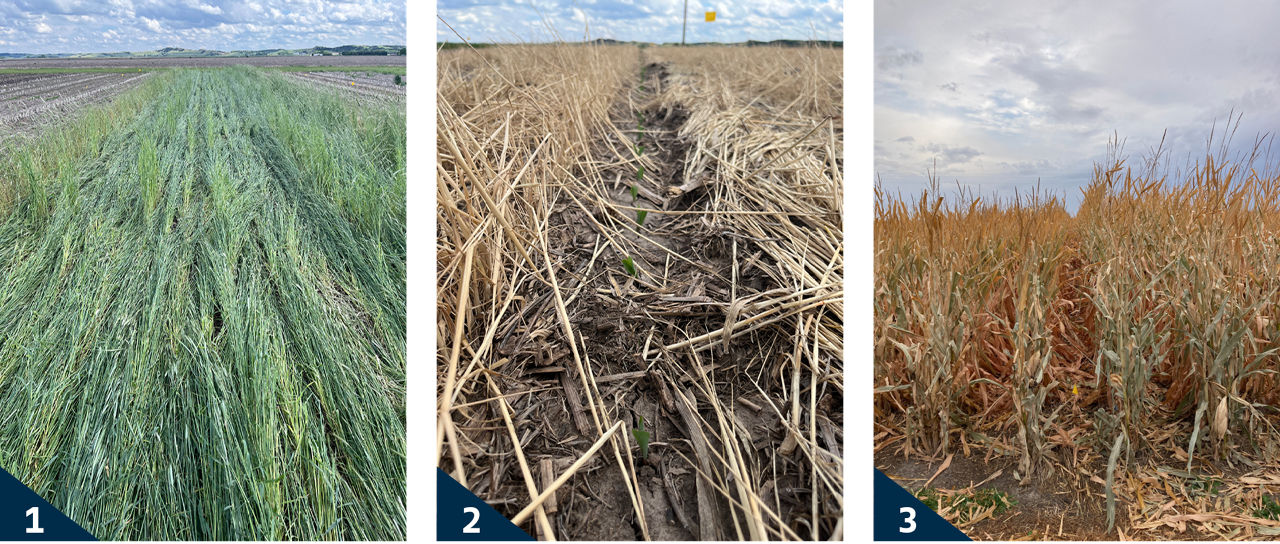
UNDERSTANDING THE RESULTS
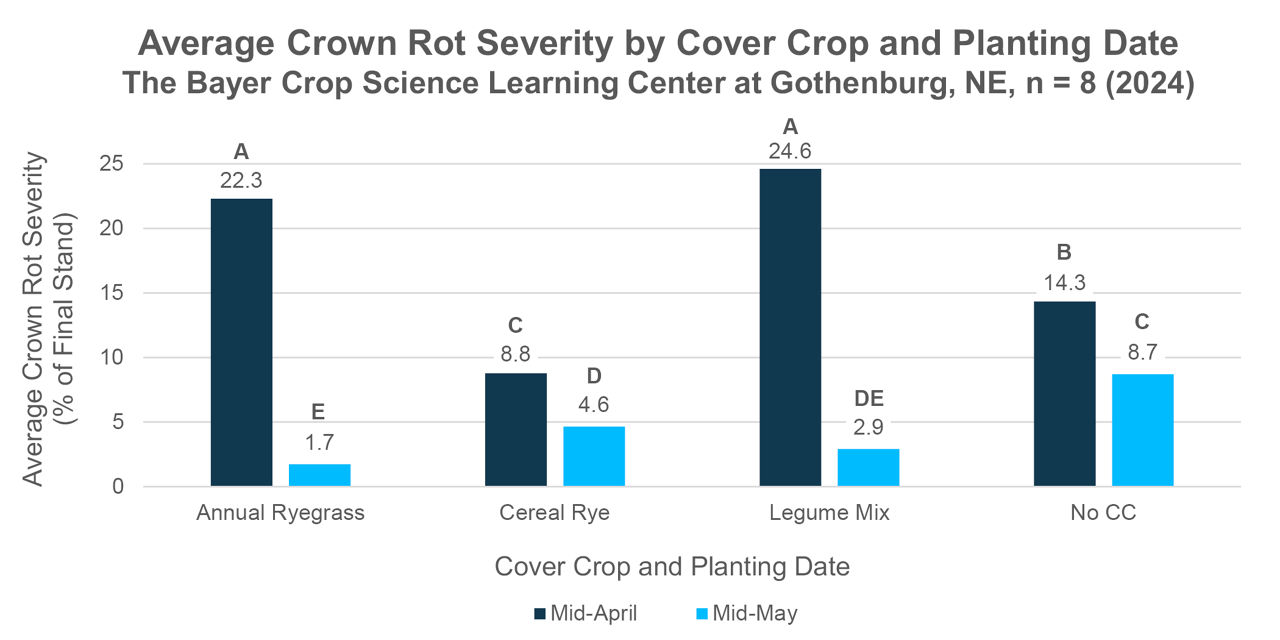
- Corn planted in mid-April had consistently higher crown rot severity across all cover crop treatments compared to mid-May plantings (Figure 2).
- The highest crown rot severity was observed in the annual ryegrass (22.3%) and legume mix (24.6%) treatments at the mid-April planting date (Figure 2).
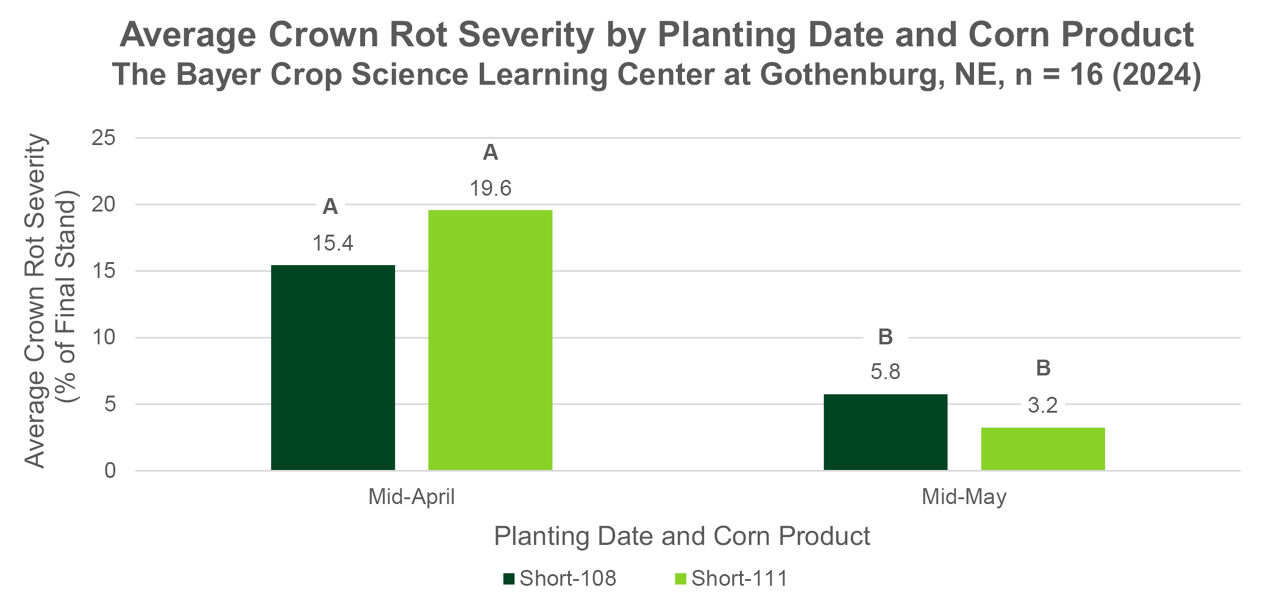
- Both Short-108 and Short-111 products had significantly higher crown rot severity when planted in mid-April compared to mid-May (Figure 3).
- There was no significant difference in crown rot severity between products on either planting date (Figure 3).
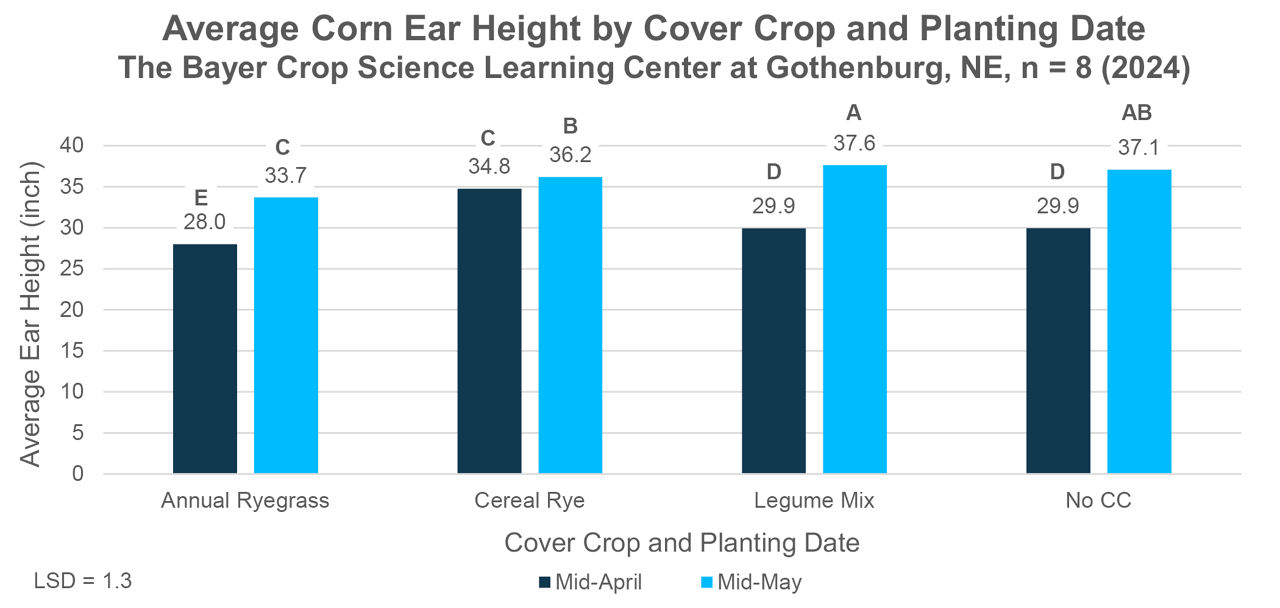
- In all cover crop treatments, corn planted in mid-April had the lower average ear heights (Figure 4).
- However, the largest ear height of the mid-April planting dates was produced by the cereal rye cover crop treatments, which was approximately five inches larger than those produced by the other mid-April planted corn. This suggests that cereal rye may be a beneficial cover crop option when planting corn early in the season (Figure 4).

- Two of the three lowest recorded average yields occurred in the mid-April planting of the Short-111 corn product and the third lowest average yield occurred in the mid-April planting of Short-108, indicating a potential yield limitation associated with earlier plantings of these corn products (Figure 5).
KEY LEARNINGS
- If planting corn early (mid-April), be aware of a higher risk of crown rot, especially if using annual ryegrass or a legume mix as a cover crop. Delaying planting until mid-May significantly reduced crown rot disease pressure in this trial.
- In early corn planting in this trial, cereal rye was observed to maintain a higher ear height compared to other cover crops. Lower ear height in early plantings may impact harvestability, so choosing the right cover crop can help reduce issues.
- The cereal rye and legume mix treatments used in this trial resulted in similar or greater ear heights at harvest than the no cover crop treatment, regardless of corn planting date.
- Planting Preceon™ Smart Corn System products in mid-May resulted in higher yields compared to mid-April. Farmers aiming for the highest yields should consider waiting for warmer soil temperatures before planting.
- Visit with your local Bayer agronomist for more information about the Preceon™ Smart Corn System and cover crop management.
*The Preceon™ Smart Corn System, including short stature corn products developed through traditional breeding, is commercially available for planting in the 2025 growing season via the Ground Breakers® program.
1214_519301